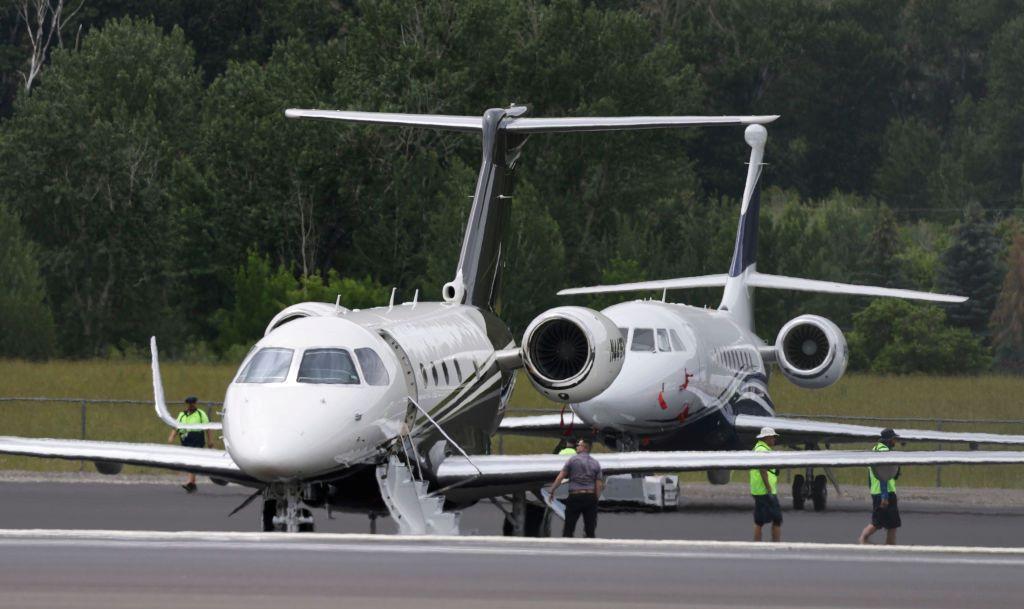Viewpoint: Aviation Insurance Rates Outlook

The aviation industry has been flying through a hard aviation insurance market since mid-2018 marked by increasing rates and stricter underwriting guidelines.
To address all the factors that have contributed to this would require a book, but key issues affecting the business and commercial general aviation insurance market include:
1. Extremely low and unsustainable rates charged in the soft market from 2006-18;
2. Low premiums combined with high claims depleting loss reserves required of insurance companies;
3. Increasing claims along with higher administrative and business expenses;
4. Higher liability awards for aviation losses in court--increasing shock (catastrophic) awards;
5. High losses. According to Milliman Market Report, general aviation insurers in the U.S. lost $693 million (before expenses and reinsurance costs) from 2016-20.
These factors and more led to higher reinsurance costs for the insurance companies, which are passed on to insurance buyers.
As a result, most claims-free business and commercial general aviation operations experienced 15-30% average annual rate increases from 2019-21.
Business and commercial aviation operations saw some of the largest increases as their rates had plummeted the furthest in the soft market compared to other market segments.
Single-pilot and owner-flown turbine operators were among those hardest hit. During that period, aviation insurance companies also worked to reduce the limits of liability offered on operations with higher limits of liability.
Rising Rates
In 2022, the aviation insurance market continues to see an uptick in rates across the entire aviation sector.
There are several significant factors contributing to the issue:
1. In the past two years, increased flying activity in general aviation has resulted in a higher number of both catastrophic and minor accidents/losses in aviation.
2. Liability award amounts against aviation operations continue to increase.
3. Supply chain issues and inflation have led to parts availability issues and significantly increased costs of parts and labor. This has led to noticeably increased direct costs for claims along with longer aircraft-on-ground downtime, increasing liability expenses.
4. Inflation has greatly increased the cost to conduct business, handle claims and settle claims.
5. Boeing 737 MAX losses: Two airline crashes and the resulting “grounding claims” estimated in combined losses of $2 billion.
These factors have led to reinsurance rates continuing to rise.
Premiums
According to McKinsey’s Global Insurance Report, the total annual worldwide aviation insurance premiums are $6 billion.
General aviation makes up $2.6 billion of that total, followed by airlines at $1.7 billion, product liability at $1 billion, space at $450 million, and the Aviation War Risk market at approximately $250 million.
All insurance premiums worldwide total $6 trillion, so the worldwide aviation insurance market makes up less than 1/10 of 1% of the worldwide insurance market.
The insurance industry relies on the law of large numbers: The premiums of many pay for the claims of few.
The catastrophic losses in the aviation market present a significant threat to insurer profitability. To remain sustainable into the future, all insurers in the aviation sector have been forced to continue to obtain rate increases and improve loss ratios on their renewals across the board for the foreseeable future.
For aviation insurers to spread their risk, provide the required limits of liability and insured values in aviation and avoid taking a full catastrophic loss, all insurers cede a meaningful portion of the risks they write to reinsurers.
Reinsurers are insurance companies for insurance companies. They charge a premium to the insurance companies for the reinsurance coverage. Reinsurers are one driver of the rate increases. They also “underwrite the underwriters” when evaluating their reinsurance contracts and reviewing losses.
The scrutiny for aviation insurance underwriters today has not been higher in recent history. This has driven the stricter underwriting guidelines and training requirements aviation operators are facing today. The good news is that, in general, the average increases through the first quarter of 2022 have been lower than the levels experienced in 2020 through mid-2021.
Russian Aircraft Could Affect Future Rates
A new issue has become a potential factor in future aviation insurance renewals. On March 14, Russia passed a law that allows for the confiscation of all non-Russian-owned or financed aircraft in the country.
Most airlines lease much of their equipment, and there are estimated to be more than 500 aircraft that fall under Putin’s order.
If the full impact of this law is realized, there is estimated to be more than $10 billion in losses to the international aviation market. This would certainly lead to even increased costs of securing aviation insurance cover.
At the time this was written, the outcome hasn’t been determined and the market remains uncertain about the potential impact of this issue. This will likely be litigated and adjusted for years to come, and much of it may fall to the War Risk market. There is currently too much uncertainty to predict the impact of this event.
The good news is that reinsurers haven’t had knee-jerk reactions to this potential issue, and rates haven’t seen dramatic increases as a result. As the issues unfold over time, the impact on the market will become clearer.
Many business and commercial general aviation operations ask what they can do to help improve their risk and mitigate the increases.
The best answer is to continue to implement, follow and improve the highest safety, quality, maintenance and training standards to reduce risk. Unfortunately, given that insurance is about spreading risk, aviation insurance market losses will continue to have a negative impact on the entire aviation sector.
Tim Bonnell Jr. is the founder, president & CEO of Aeris Insurance Solutions. Bonnell is the author of Aircraft Insurance Fundamentals: A Concise Guide For Aircraft Owners and Operators. He is a third-generation pilot with private and instrument ratings and a second-generation aviation insurance broker. He holds the Certified Insurance Counselor and Certified Aviation Insurance Professional designations.




